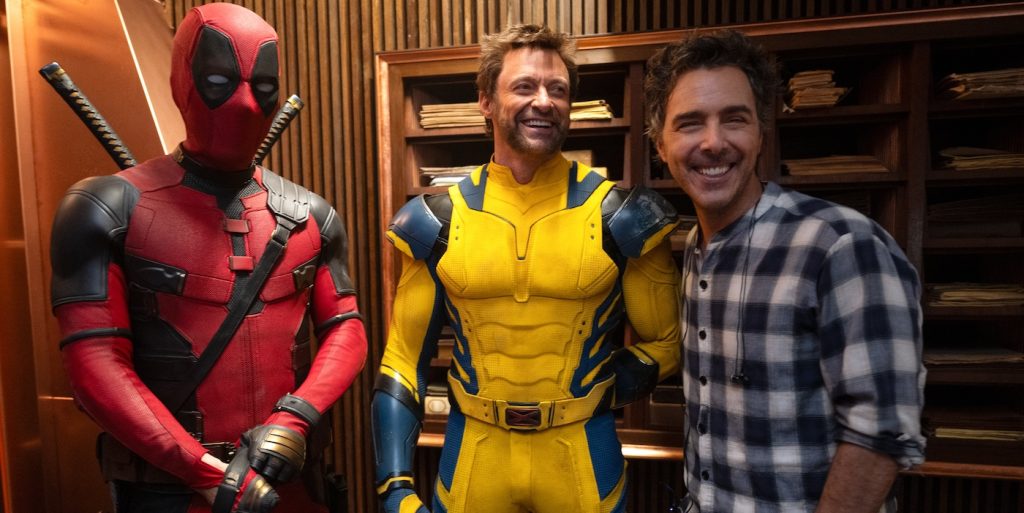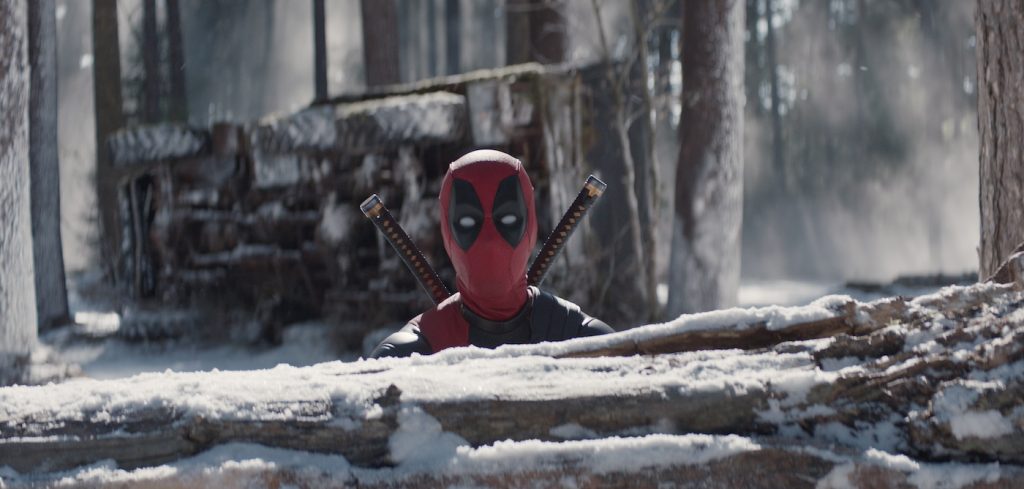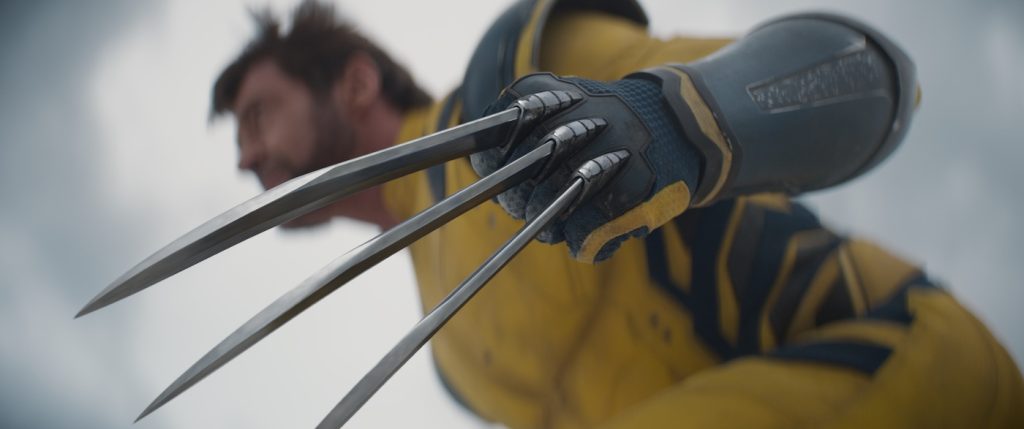“Deadpool & Wolverine” Sound Designers on Turning Frozen Tea Towels Into Broken Bones
Three months after debuting in theaters this summer, Deadpool & Wolverine’s winning streak still wasn’t over. It eventually surpassed Barbie’s domestic gross in its 13th weekend, with director Shawn Levy’s R-rated box office juggernaut ranking as the 12th highest-grossing movie of all time, with a domestic haul of over $636M.
It has been a hectic year for Oscar-nominated and Emmy-winning sound designer Craig Henighan, who not only worked on 2024’s second biggest film but also delivered Apple TV+’s two-hander dark comedy, Wolfs and Cate Blanchett’s limited series, Disclaimer. A frequent collaborator of Levy’s, he previously worked on The Adam Project, Stranger Things, and Free Guy. “I have a long history with Shawn, so I know what he likes and his approach to the action. I understand what he needs from sound at certain points but also know when to leave him alone to find a cut,” Henighan shares.
“I don’t think we could have done it so quickly without that shorthand. Knowing what they want ahead of time really helps,” concurs co-supervising sound editor Ryan Cole, who also worked with Levy and Henighan on The Adam Project and Stranger Things, winning multiple Emmys for the latter along with Henighan. Focusing on dialogue and ADR, Cole had a great time overseeing the loop groups, particularly on the “Deadpool Corps” sequence in the third act.
Henighan and Cole recently spoke with The Credits about what went into the complicated sonic landscape for one of Marvel’s most successful films.
How do you design the soundscape for such a stunt-centric film steeped in comedy?
Craig Henighan: This was a great opportunity to merge comedy and action. We needed high action and high-energy sounds, so the cutting had to be tight and precise, but we also had to get out of the way for the jokes. With all the sound elements that go into the stunts, it still needs to be funny, especially with Deadpool’s dialogue. Kudos to our [picture] editors, Dean Zimmerman and Shane Reid, who worked so hard with Ryan [Reynolds] and Shawn in post to make sure everything worked rhythmically and musically. Temp sound usually provides a good roadmap, so we knew where the beats will be. Then, Ryan [Cole] and I flesh out those sounds to make them rock a little more. Almost every action scene has a music cue that the audience needs to hear, so sound has to be there without dominating every moment.
The opening sequence is one of the most deliriously entertaining and absorbing that I can remember—Deadpool finds and fights with Wolverine’s bones against a platoon of masked Time Variance Authority assassins, all set to NSYNC’s “Bye Bye Bye.”
Craig Henighan: With NSYNC’s “Bye Bye Bye” as the driving force, you want to feel the sounds but not necessarily hear them all the time. Sometimes the music would lead for a bit, and then the sound would take over, then music would come back.
Ryan Cole: It plays more like a music video. Especially with the stunts being so visceral and R-rated, you don’t want to hear each guy screaming when he gets stabbed, but you want to hear a couple of them because they’re jokey ones. Shane and Dean were great at creating those spaces for us to throw something in. In the Void fight, Deadpool delivers quips in the middle of all the swords, guns, and claws while people are being thrown around, but you still want to hear the “Eew!” grunts from Deadpool.
Speaking of R-rated, congratulations on the movie surpassing Joker to become the #1 R-rated movie worldwide!
Craig Henighan: We all knew it was a really good film when we were working on it, and we laughed all the time with our great crew. But to get to the top spot in less than a month after release, it’s insane. Shawn, Ryan, and Marvel worked tirelessly, and everybody put their heart and soul into this. So, for the world to react in such a positive way has been unbelievable. It’s such an enjoyable, fun movie to experience in the theater; we want everyone to laugh and enjoy something together.
Ryan Cole: It’s also a positive film about two guys becoming friends, with Deadpool finding his family by the end. Being R-rated loses a huge demographic, but people obviously went back to see it over and over again. They connected to it on so many levels.

Back to the opening sequence, was “Bye Bye Bye” always meant to be the song?
Craig Henighan: We had a lot of time to live with these sequences and understand the dynamics and rhythm of the title sequence. We’d work on something else and come back to it to make sure it still felt right. The initial version didn’t have Deadpool dancing. But once they locked in to “Bye Bye Bye,” someone came up with the idea of inserting cutaways of Deadpool doing the dance moves from NSYNC’s music video.
Ryan Cole: When you leave and come back to something, it’ll often inform you of what changes are needed that you hadn’t thought of on the first pass.

How did you mix the music with the sounds of guys getting mauled by Wolverine’s adamantium bones?
Craig Henighan: Our job was to stay out of the way but support the narrative of that song and how fun it is. That opening was the first chance—and maybe only chance—to get the audience along for the ride. So, it had to be fun because the audience needed to know they were going to enjoy this movie. Sonically, we had hits, stabs, gore, and blood, but every stab also had a musical boom to it. If you really get forensic about the hits, some are a little out of sync with the picture but match the song’s beats instead. It was more important to lock sound in with what the music was doing. From an editorial standpoint, it’s a little counterintuitive. Normally, you’re focused on synching perfectly to picture, but this was more about the feel of the music. Some of it was to make sure people hear the TVA soldiers getting killed because 20 minutes later, we call back to that fight.
Ryan Cole: You don’t want to hear everything, but you want to hear the adamantium bones going into body parts in that comedic way or the primal screams as if someone was getting killed that way. [Dialogue and re-recording mixer] Lora Hirschberg set a great stage with the music and set where we needed to go in and out of.

How did you make the adamantium hits sound different from the swords and blades?
Craig Henighan: The adamantium hits sounded cool but didn’t have an edge to it. We were looking for a different ring and tonality since you’re looking at adamantium claws versus an adamantium katana sword. With sound designers Eric Norris and Addison Teague, we recorded different types of metal hitting metal, anything from steel rebar hitting other things around the Foley studio that would ring a certain way to get a set of distorted rings and metallic hits. The tremolo technique gave it a flutter effect to some of the ringing. That’s one of the tricks to give a static sound a sense of movement.
What other fun, unusual techniques were used to create these sound effects?
Craig Henighan: For the stabs, we used the standard stuff like watermelons, fruit, raw meat. One of my tricks for stabs is to mix a pile of dirt, flour, and mud to make it feel and sound thicker than stuffing your hand into a watermelon would. Squeezing that mixture between your fingertips can add another layer and make it sound like blood is oozing out. When Deadpool twists his baby knife into Wolverine’s thigh, we could use the normal bone-breaking stuff with celery. Or, freeze some wet tea towels overnight, and when you twist them while frozen, that gives you the impression of bones breaking, too, which is a fun layer to add. For instance, I’ve turned a squeaky old hinge on a rolling door into bat squeaks. Us “soundies” always have our ears open and hopefully a microphone/recorder close by. Sometimes, the best way is to use your own voice. If you’re working on a monster sequence, you can map it out with your voice to get the rhythm of the scene and then replace your vocalizations with that of animals or inanimate objects. That’s the fun with sound design.
Check out part two, which puts you inside the hilarious and intense Honda Odyssey brawl and the wild cameos in the third act.
Featured image: Hugh Jackman as Wolverine/Logan in 20th Century Studios/Marvel Studios’ DEADPOOL & WOLVERINE. Photo by Jay Maidment. © 2024 20th Century Studios / © and ™ 2024 MARVEL.



